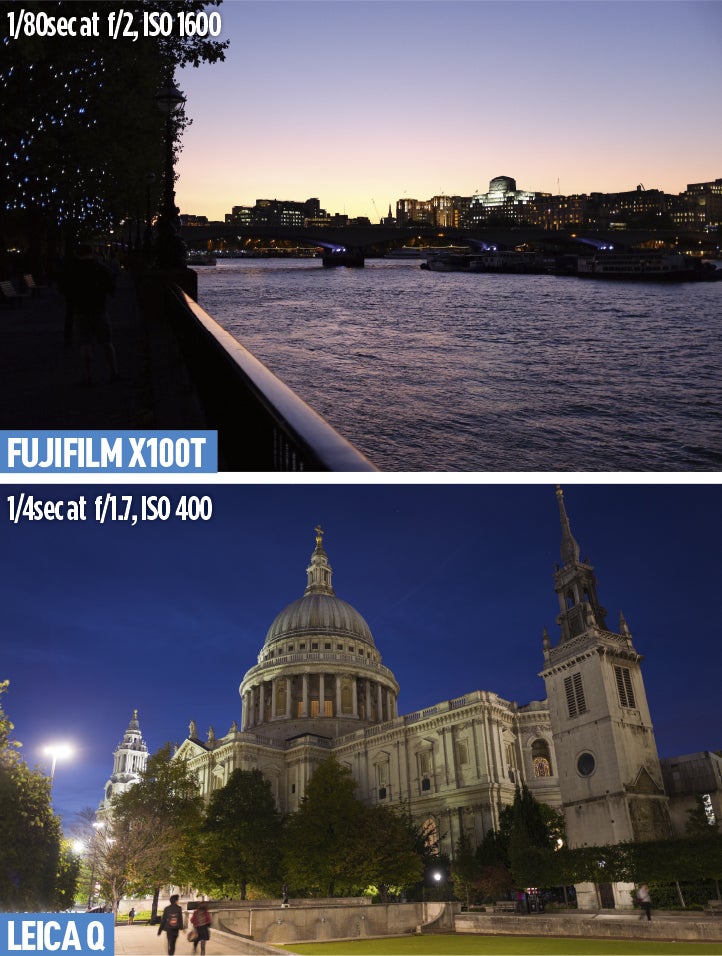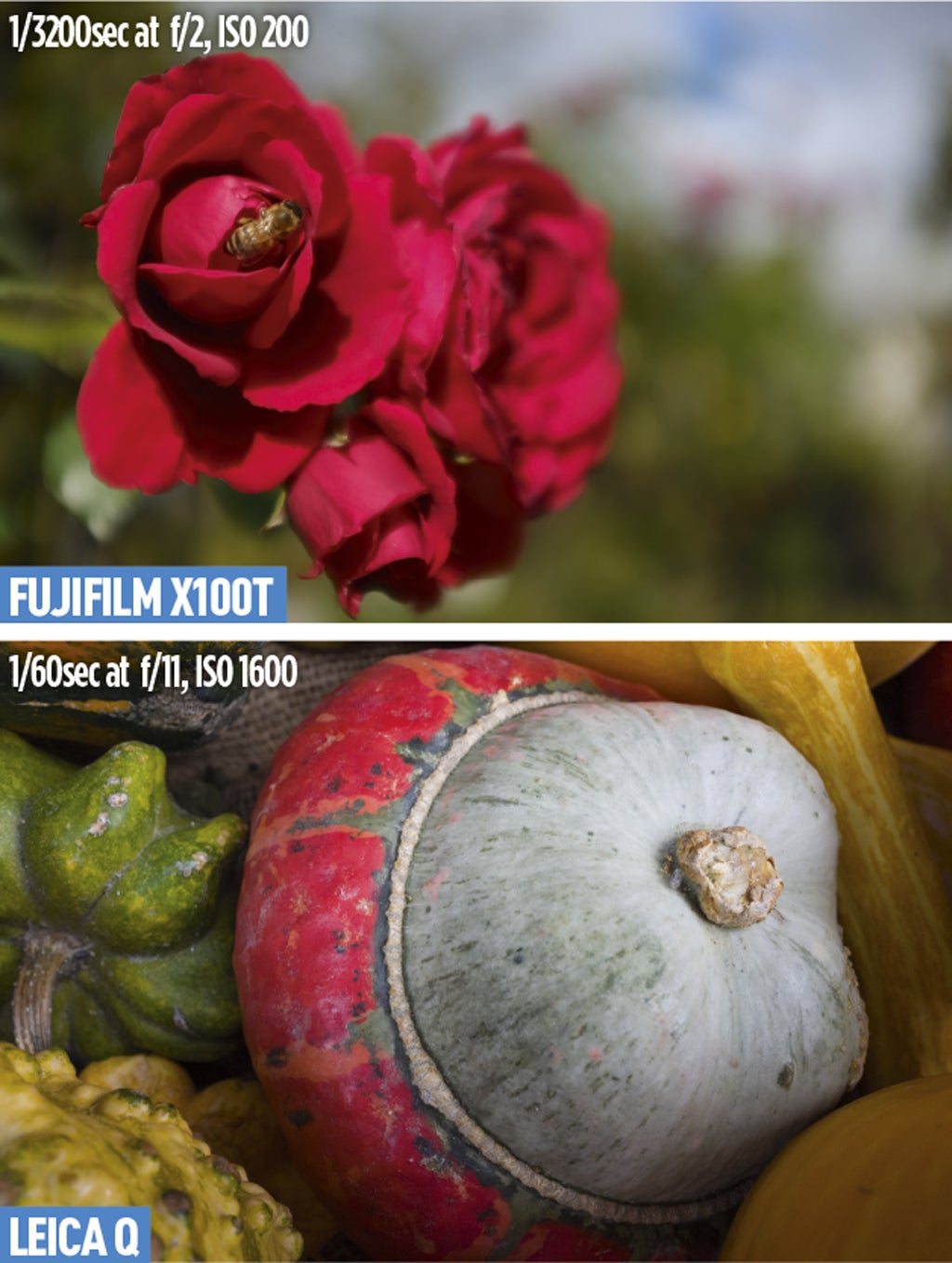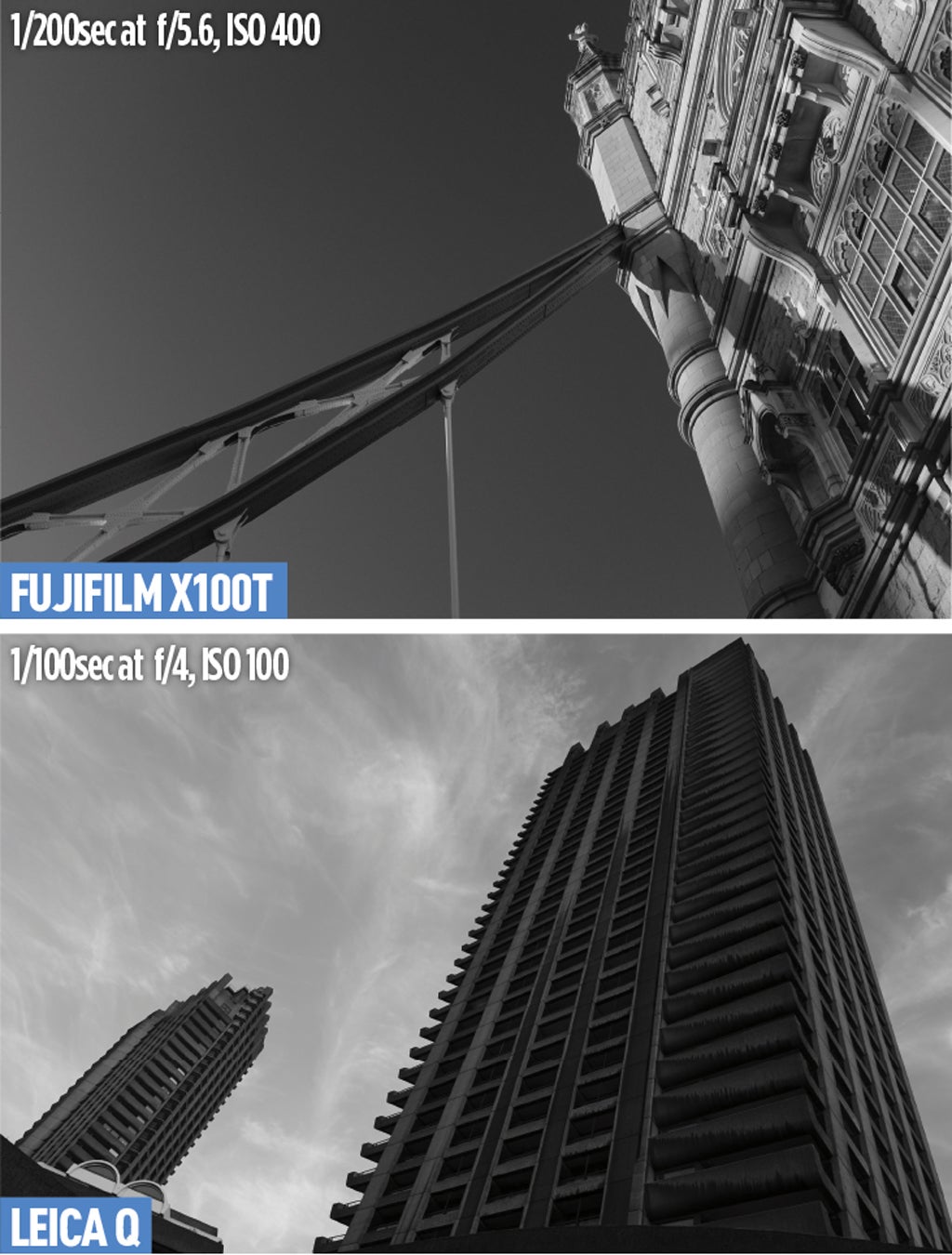Is the full-frame Leica Q (Typ 116) really worth its £2,900 premium price compared to the £840 Fujifilm X100T? Andy Westlake finds out
Fujifilm X100T Vs Leica Q (Typ 116) – How they compare
Connectivity
Fujifilm’s Camera Remote app for iOS and Android allows both image sharing and remote control. However, the available settings are limited and unintuitive to use.
The Leica Q app for iOS and Android allows remote control with live view, touch focus and access to all camera settings. You can also download images to your phone
Electronic shutter
The electronic shutter on the X100T has to be enabled in the menu and gives speeds up to 1/32,000sec. Turning it on disables the flash and extended ISO settings.
With speeds up to 1/16,000sec, the electronic shutter on the Leica Q kicks in automatically when needed. High speeds can be set manually using the electronic top dial.
Battery life
The NP-95 battery of the X100T is rated for 330 shots per charge. An external charger is supplied, and the battery can also be charged using the Micro USB port.
The BP-DC12 Li-ion battery of the Leica Q has a 1,200mAh capacity, and is charged externally. I was usually able to get a couple of hundred shots per charge.
Video
Full HD 60fps video is available on the X100T, with full manual control over exposure settings. But there’s no image stabilisation so handheld footage will be jittery.
While full HD 60fps video is on offer on the Leica Q, there’s no manual control over exposure. The stabilised lens evens out camera shake during handheld recording.
Real-world comparisons
Low-light shooting

With its 23mm f/2 lens and eminently usable ISO 3,200, the X100T is no slouch in low light. But with no IS, you’ll often need higher ISOs compared to the Leica Q.
The Leica Q’s combination of 28mm f/1.7 lens, optical stabilisation and full-frame sensor makes it a low-light monster. I was able to get sharp results handheld at a shutter speed of 1/4sec, which allowed me to shoot after dusk using ISO 400.
Close ups

While the X100T’s 23mm f/2 lens can focus within 10cm in its macro mode, results are soft at large apertures. It needs to be stopped down to f/5.6 for sharp results.
On the Leica Q you’re required to twist a ring on the lens barrel to engage macro mode. Doing so will allow you to focus within 17cm of a subject, but the maximum aperture is then limited to f/2.8. Results from our macro testing were excellent.
Colour modes

The X100T includes Fuji’s film-simulation modes, which mimic classic films and give superb colour output in its JPEGs (my favourite is the ‘Astia/Soft’ setting). It also has several black & white modes, which mimic different yellow, red and green lens filters. It’s quick and easy to change modes in the menu.
With the Q, Leica has radically improved its JPEG processing compared to its previous cameras, and simplified its colour modes in the process. The default standard mode gives attractive, fairly neutral output, and saturation can be adjusted in five levels. There’s also a really nice monochrome mode, but it takes a lot of button pressing to turn it on or off.
Our verdict
I’ve long been a fan of Fujifilm’s X100-series cameras, for their combination of handsome good looks, superb handling and excellent image quality. However, ever since I first I saw the Leica Q, I’ve been itching to compare them side-by-side. Because the X100T is so good – and at £840, already an extravagant purchase for most photographers – it seems impossible to believe that spending the extra money for the Leica could make any sense, no matter how lovely it might be. Indeed, for the price of the Leica Q you could buy yourself a silver X100T with its hood and adapter ring set, plus wideangle and telephoto converters, and still have enough money left to buy them all over again, but this time in black.
After spending a couple of weeks shooting the two side-by-side, though, I can genuinely see the point of the Leica Q. While the firm’s APS-C-sensor compacts have struggled to match the X100 series, the Q is a better camera in almost every way. This goes beyond the headline specs of the 24MP full-frame sensor, 28mm f/1.7 lens and 3.7-million-dot electronic viewfinder. It’s even better built and lovelier to hold and use, and the viewfinder is the best I’ve seen. Indeed, I hope Leica soon use it on a camera that can accept M-mount lenses.
That’s not to say that the X100T doesn’t have its own advantages. It’s slimmer and easier to carry around, and can be slipped into a coat or jacket pocket where the Leica Q will always need a bag. The X100T’s more extensive external controls and Quick menu also eliminate the menu diving that can be needed on the Leica Q, and I prefer having a dedicated exposure compensation dial. The X100T’s built-in ND filter is also very useful for shooting in bright light, and of course there’s that clever hybrid viewfinder. In fact, for most photographers it’s the more sensible choice.
Overall, though, I can’t help but think that almost any photographer who likes the X100 series will instantly fall in love with the Leica Q. It’s the best digital camera the company has ever made, and packed full of class-leading technology. In some respects it still feels first generation – for example, it’s crying out for an on-screen Quick menu – but with its stunning design and image quality, it has to be one of the most desirable cameras on the planet right now, although at a price.




